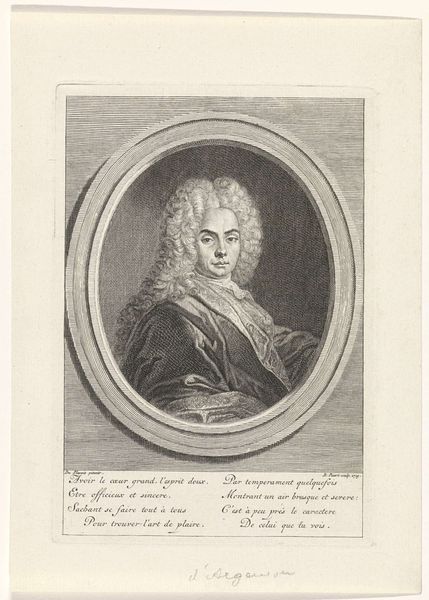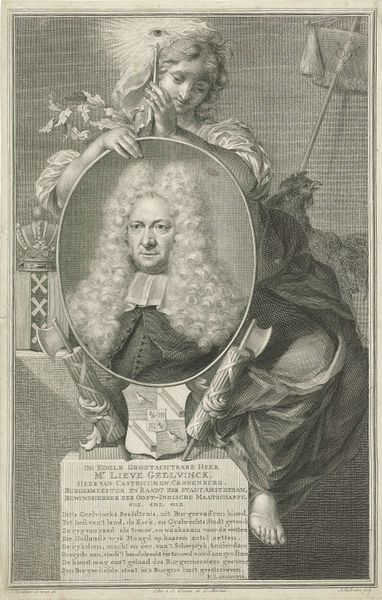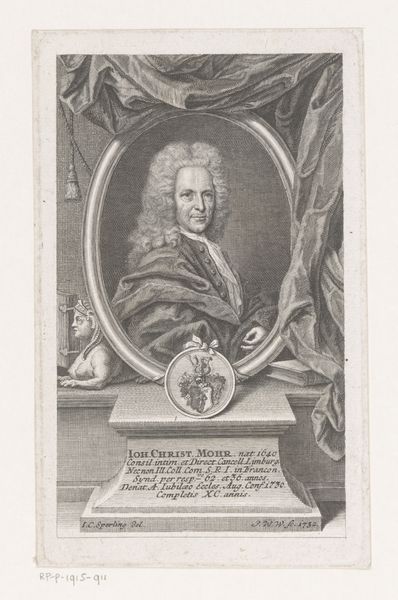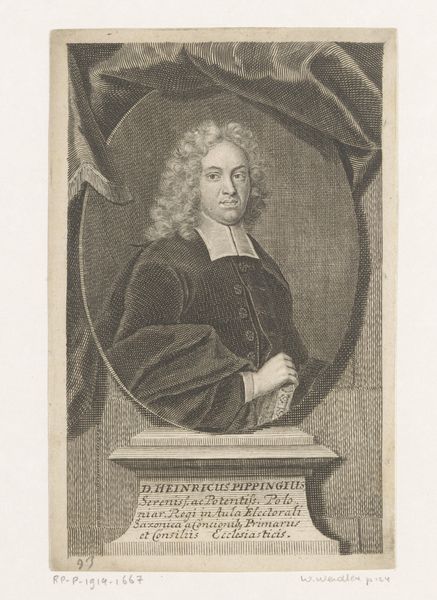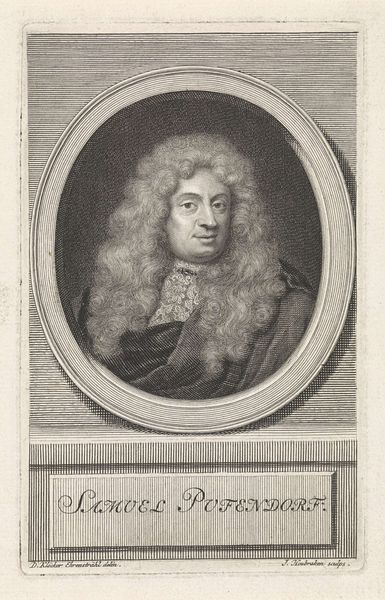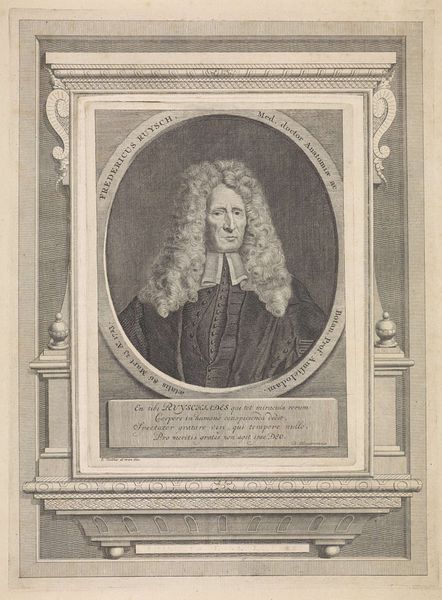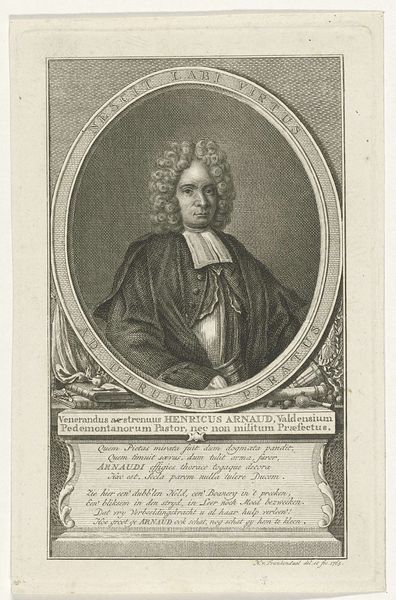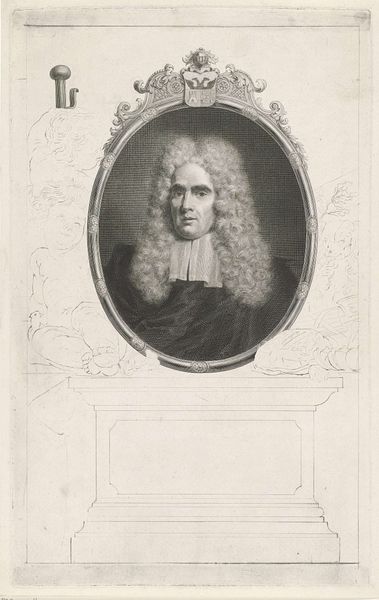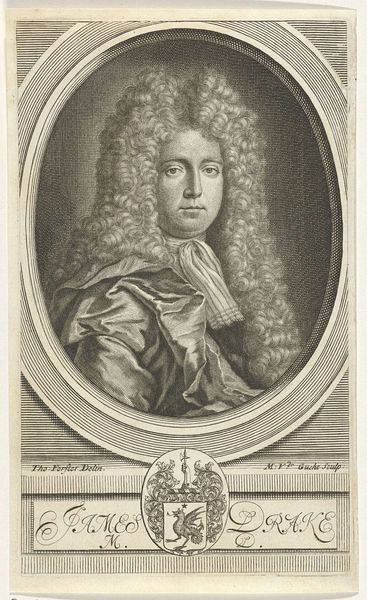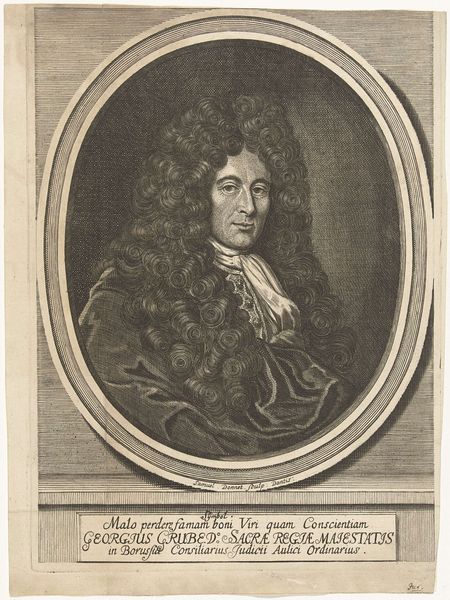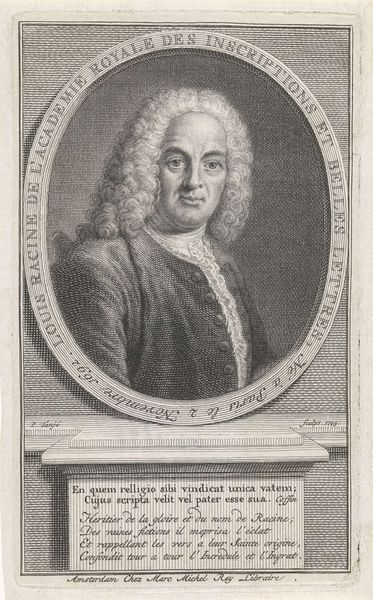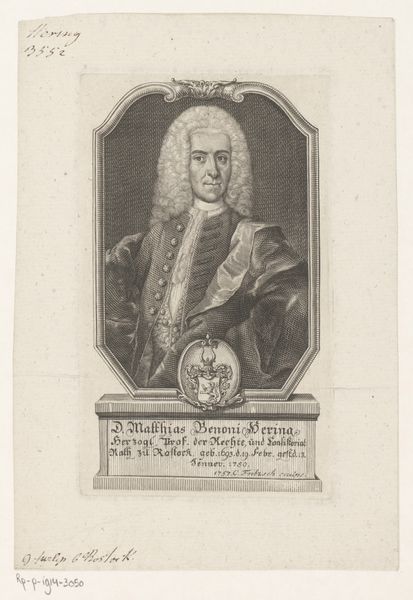
paper, engraving
#
portrait
#
baroque
#
dutch-golden-age
#
old engraving style
#
paper
#
history-painting
#
engraving
Dimensions: height 370 mm, width 230 mm
Copyright: Rijks Museum: Open Domain
Editor: So this engraving, “Portret van Aegidius van den Bempden” by Jacob Houbraken, from sometime between 1711 and 1758... it's quite formal. The ornate frame, the inscription… it really feels like a monument. What catches your eye? Curator: What speaks to me is the density of symbols layered within this portrait. The sitter is framed, quite literally, as an important figure to be memorialized, as the frame features a cherub and dog with hunting gear. But what does that mean in relation to the sitter, Aegidius van den Bempden, who was the mayor of Amsterdam? Do these symbols allude to qualities admired by his contemporaries, or perhaps even to his personal interests? Editor: That's a good point. I guess the symbols do a lot of the work in telling us about his perceived virtues, right? So the dog and the cherub could represent the Mayor's intelligence and innocence? Curator: Precisely. The choice of imagery subtly encodes cultural values. Furthermore, note how van den Bempden is framed by symbols of power: the heavy wig and stern gaze create a mask that, at the time, reinforced his authority. It's like he is borrowing imagery that signifies might, while reinforcing his place in the social order. Can you see how it ties into this historical memory and perpetuation of cultural memory? Editor: Definitely. So the symbols aren't just decorative, they are actively shaping the perception and legacy of this individual. Almost like a curated performance of power and remembrance. Curator: Indeed. And isn’t it fascinating how, through these layered symbols, the artist immortalizes not just an individual but also the values of an entire era? Editor: It is. Now I’m really thinking about the portrait, and about how carefully crafted those visual messages are. Thanks!
Comments
No comments
Be the first to comment and join the conversation on the ultimate creative platform.
